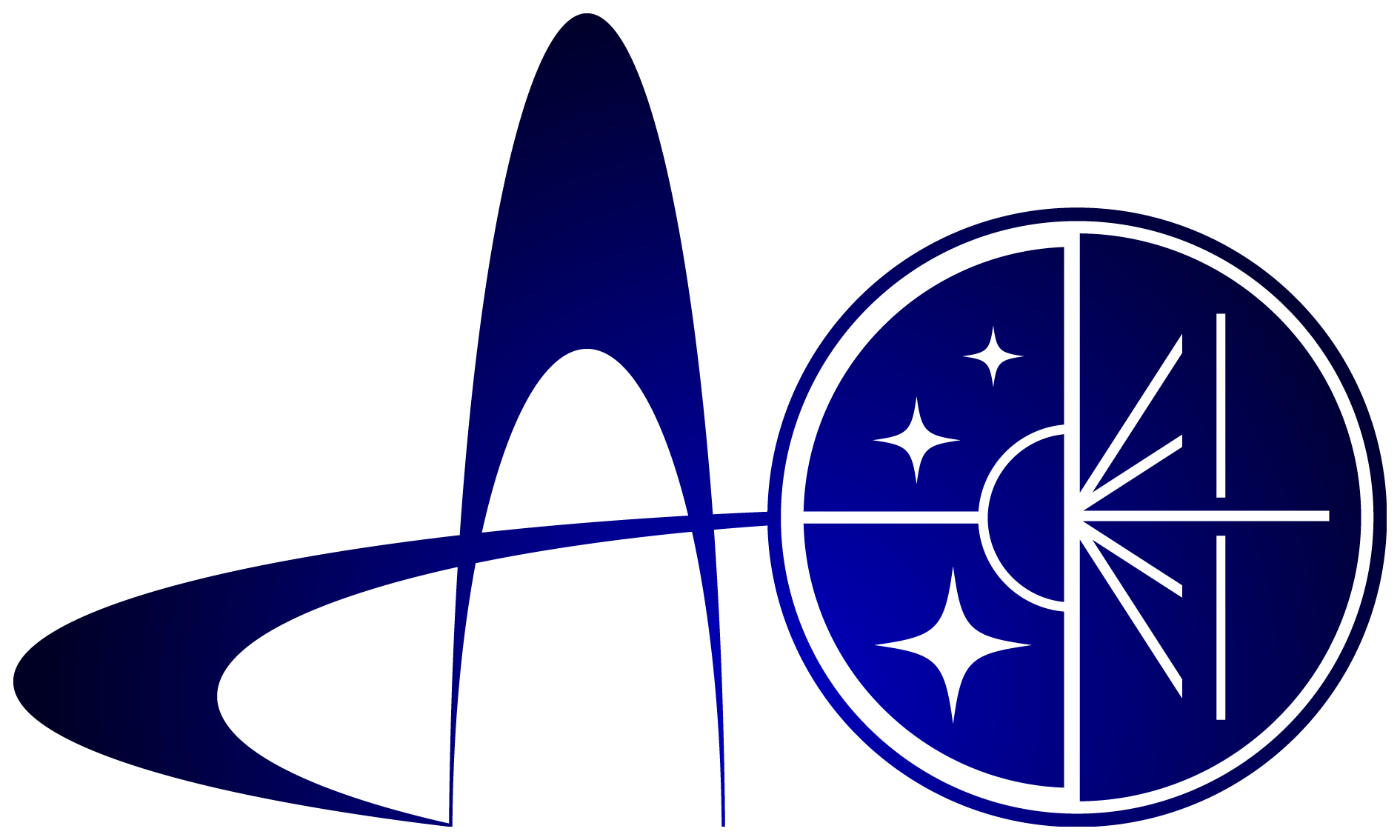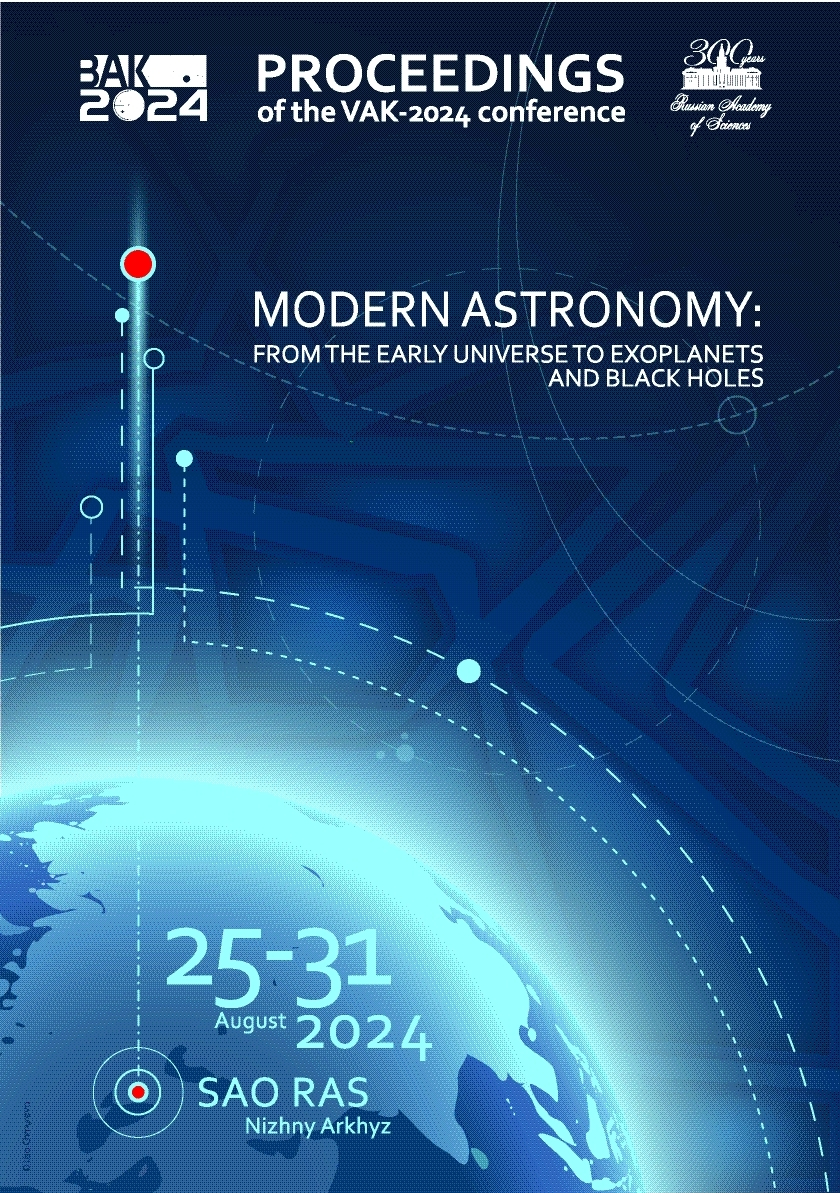Kazan Federal University
Institute for Nuclear Research of the Russian Academy of Sciences
Astrophysics Group, Cavendish Laboratory, University of Cambridge
Moscow Institute of Physics and Technology
Kazan Federal University
UDC 53
UDC 520
UDC 521
UDC 523
UDC 524
UDC 52-1
UDC 52-6
CSCSTI 41.00
CSCSTI 29.35
CSCSTI 29.31
CSCSTI 29.33
CSCSTI 29.27
CSCSTI 29.05
Russian Classification of Professions by Education 03.06.01
Russian Classification of Professions by Education 03.05.01
Russian Classification of Professions by Education 03.04.03
Russian Library and Bibliographic Classification 2
Russian Library and Bibliographic Classification 223
Russian Trade and Bibliographic Classification 614
Russian Trade and Bibliographic Classification 6135
BISAC SCI004000 Astronomy
BISAC SCI005000 Physics / Astrophysics
We present a study of the multiwavelength (MW) variability of the blazar AO 0235+164 based on the radio-to-$\gamma$-ray data covering a period from 1997 to 2023. The radio data are represented by the measurements from the SAO RAS, IAA RAS, and CrAO RAS telescopes. The optical measurements were collected with the SAO RAS 1-m and 0.5-m reflectors. The archive data at 230 GHz from the Submillimeter Array and the $\gamma$-ray data from the Fermi-LAT mission were used too. A significant correlation between different spectral bands is found with time delays up to 1.7 years. The relation between time delay and frequency is well described by a linear law. The revealed features of MW variability for the quiet period and for flaring states suggest that the mechanisms dominating the radio-$\gamma$-ray variations are not substantially different. AO 0235+164 shows a total variability period of $\sim$6 years for all wavelength bands, and 1.4-2.3 years during the low state, which may reflect its general properties.
galaxies: active; BL Lacertae objects: individual (AO 0235+164)
1. Baluev R., 2008, Mon.Not.RAS, 385, p. 1279
2. Cohen R., Smith H., Junkkarinen V., et al., 1987, Astrophysical Journal, 318, p. 577
3. Fan J., Kurtanidze O., Liu Y., et al., 2017, Astrophysical Journal, 837, p. 45
4. Gupta A., Banerjee D., Ashok , N., et al., 2004, Astron.&Astrophys., 422, p. 505
5. Jorstad S., Marscher A., Morozova D., et al., 2017, Astrophysical Journal, 846, p. 98
6. Krishna Mohana A., Gupta A., Marscher A., et al., 2024, Mon.Not.RAS, 527, p. 6970
7. Kutkin A., Pashchenko I., Lisakov M., et al., 2018, Mon.Not.RAS, 475, p. 4994
8. Miller H., Carini M., Goodrich B., 1989, Nature, 337, p. 627
9. Raiteri C., Villata M., Aller H., et al., 2001, Astron.&Astrophys., 377, p. 396
10. Roy A., Chitnis V., Gupta A., et al., 2022, Mon.Not.RAS, 513, p. 5238
11. Shuygina N., Ivanov D., Ipatov A., et al., 2019, Geodesy and Geodynamics, 10, p. 150
12. Sotnikova Yu., 2020, Ground-Based Astronomy in Russia. 21st Century, Proc. All-Russian Conf., ed. I. Romanyuk, I. Yakunin, A. Valeev, D. Kudryavtsev, p. 32
13. Urry C. and Padovani P., 1995, PASP, 107, p. 803
14. Valyavin G., Beskin G., Valeev A. et al., 2022, Photonics, 9, p. 950
15. Vlasyuk V., Sotnikova Yu., Volvach A., et al., 2023, Astrophys.Bull., 78, p. 464
16. Volvach A., Larionov M., Volvach L., et al., 2015, Astron.Reports, 59, p. 145
17. Volvach A., Volvach L., Larionov M., 2023, Galaxies, 11, p. 96









